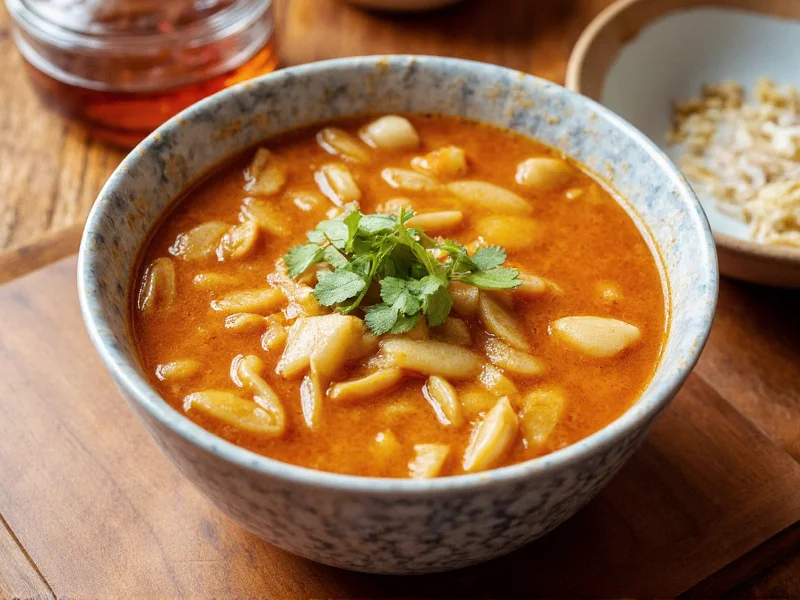When exploring the world of Japanese cuisine, few elements are as fundamental as miso soup. For home cooks and culinary enthusiasts seeking to master this essential dish, dedicated miso soup books offer invaluable guidance beyond what general Japanese cookbooks provide. These specialized resources dive deep into the nuances of miso preparation that casual recipes often overlook.
Understanding Miso Soup Book Categories
Miso soup publications generally fall into three distinct categories, each serving different culinary needs. Traditional-focused books emphasize historical preparation methods and regional variations from Japan's diverse prefectures. Technique-oriented resources break down the science behind perfect dashi and miso integration. Modern interpretation books explore creative adaptations while maintaining authentic flavor profiles.
| Book Category | Best For | Key Features |
|---|---|---|
| Traditional Focus | Cultural authenticity seekers | Regional variations, seasonal ingredients, historical context |
| Technique-Oriented | Serious home chefs | Dashi preparation methods, miso fermentation science, temperature control |
| Modern Interpretations | Innovative cooks | Non-traditional ingredients, dietary adaptations, fusion approaches |
Essential Elements of Quality Miso Soup Resources
Not all miso soup books deliver equal value. The most helpful resources clearly explain the critical relationship between miso paste varieties and final flavor profiles. They provide precise measurements for dashi preparation rather than vague "to taste" instructions. Comprehensive books detail proper miso incorporation techniques that preserve beneficial enzymes destroyed by boiling.
Look for publications that address common beginner mistakes, such as adding miso directly to boiling liquid or using inappropriate miso types for specific applications. The best miso soup cookbook for beginners includes troubleshooting sections for issues like separation, excessive saltiness, or lack of umami depth.
Evaluating Miso Paste Guidance
Superior miso soup books dedicate significant attention to understanding miso varieties. They explain the differences between white (shiro), red (aka), and mixed (awase) miso pastes, including their fermentation periods, salt content, and ideal applications. Detailed resources include visual guides showing proper miso texture and color indicators of quality.
Practical miso soup recipe books provide substitution guidance for when specific miso types aren't available. They clarify regional naming differences that often confuse Western cooks, such as distinguishing between hatcho miso and other dark varieties. The most valuable resources include sourcing information for authentic ingredients without requiring specialty store access.
Mastering Dashi Fundamentals
No discussion of authentic miso soup books would be complete without addressing dashi preparation. Comprehensive resources explain multiple dashi methods including traditional kombu and bonito, vegetarian alternatives, and quick preparation techniques. They specify precise soaking and heating times that dramatically impact flavor development.
Advanced miso soup cookbooks detail how different dashi bases interact with various miso types. They provide clear indicators of properly prepared dashi, such as the appearance of small bubbles around 140°F (60°C) signaling optimal extraction before boiling destroys delicate flavors. Books focused on traditional Japanese cooking emphasize the importance of dashi quality as the foundation of exceptional miso soup.
Practical Application Guidance
The most useful miso soup publications include practical scaling information for different serving sizes. They address common kitchen challenges like proper miso dissolution techniques and ingredient sequencing that prevents curdling. Detailed books provide timing guidance for adding delicate ingredients like tofu or seaweed to maintain optimal texture.
Quality resources acknowledge real-world cooking constraints, offering solutions for limited equipment or time. They explain how to adapt traditional recipes for Western kitchens while maintaining authentic flavor profiles. The best miso soup book for home cooks includes storage and reheating instructions that preserve flavor integrity across multiple servings.
Selecting Your Ideal Resource
Choosing the right miso soup book depends on your specific culinary goals. Beginners benefit from publications with step-by-step visual guides and clear explanations of Japanese cooking principles. Experienced cooks seeking to refine their technique should look for books emphasizing subtle flavor adjustments and advanced preparation methods.
Consider your dietary requirements when selecting resources, as some books specialize in vegan miso soup recipes or adaptations for specific health considerations. Those interested in cultural context should prioritize books written by authors with direct experience in Japanese culinary traditions rather than secondhand interpretations.











 浙公网安备
33010002000092号
浙公网安备
33010002000092号 浙B2-20120091-4
浙B2-20120091-4